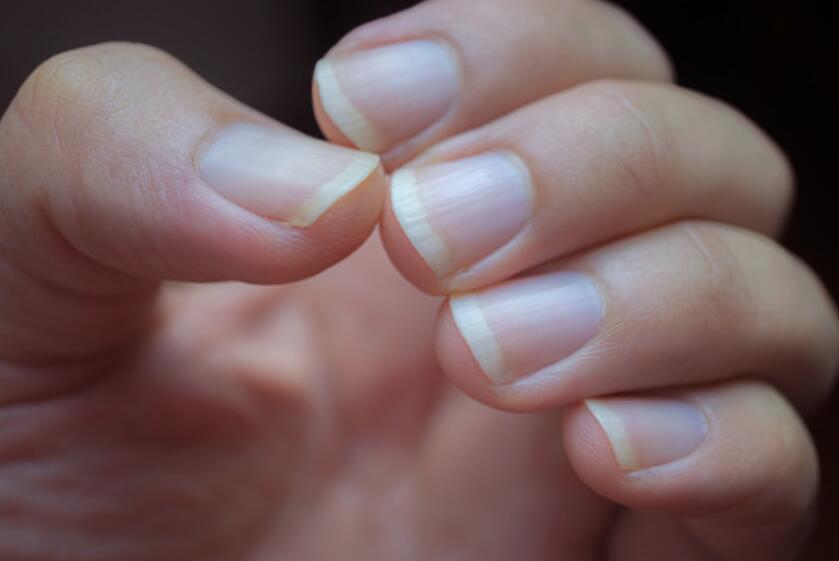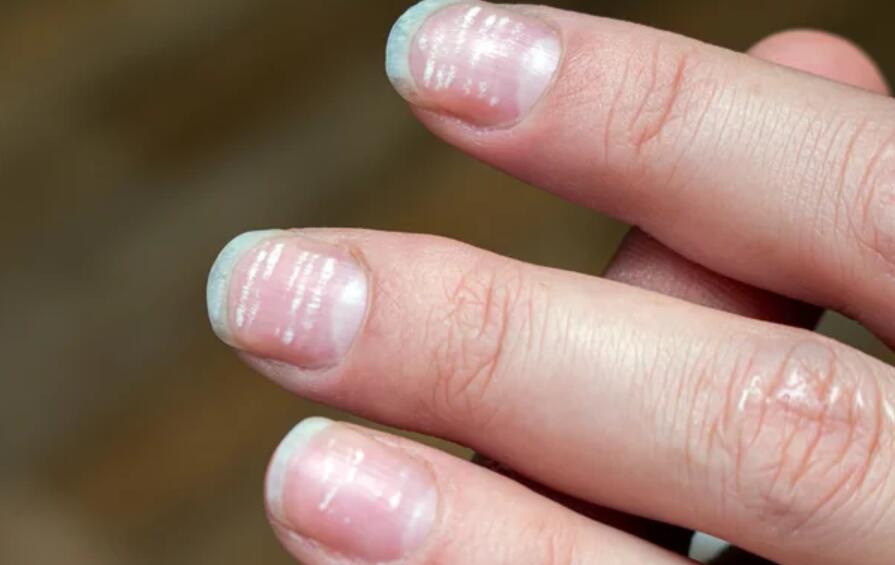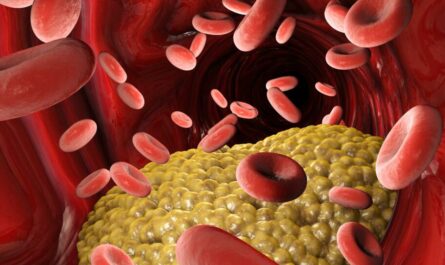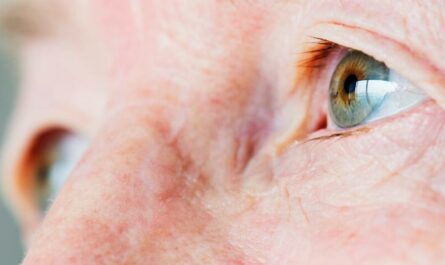White nail spots, also known as leukonychia, are a common nail condition that can affect people of all ages. While they may appear harmless, these white spots can be indicative of underlying health issues or lifestyle factors. Understanding the common causes of white nail spots and seeking appropriate treatment is essential for maintaining healthy nails. In this article, we will explore 12 common causes of white nail spots and discuss potential treatment options.
Symptoms of White Spots on Nails
The appearance of white spots on nails can vary depending on the underlying cause. Some common symptoms include:
- Small, pin-point-sized white dots on one or more nails (punctate leukonychia)
- Larger white spots or bands that run across the nail (transverse leukonychia)
- White lines that run up and down the nail (longitudinal leukonychia)
- The entire nail turns white (total leukonychia)
- Nail pitting, splitting, or crumbling
- Nail discoloration (brown or yellow)
In most cases, the white spots are painless and do not cause any discomfort. However, if the spots are accompanied by other symptoms like nail thickening, brittleness, or discoloration, it may indicate an underlying health condition that requires medical attention.

Types of Leukonychia
1. Punctate Leukonychia: This type of leukonychia is characterized by the presence of small white spots or dots on the nails. It is often caused by minor trauma to the nail matrix or nail bed.
2. Transverse Leukonychia: Transverse leukonychia is characterized by the presence of horizontal white bands or lines across the nails. It can be caused by a variety of factors, including nutritional deficiencies, systemic diseases, or certain medications.
3. Longitudinal Leukonychia: Longitudinal leukonychia refers to the presence of white lines that run vertically along the nails. It can be caused by a variety of factors, including trauma, fungal infections, or certain systemic diseases.
4. Total Leukonychia: Total leukonychia is characterized by the entire nail plate appearing white. It can be caused by systemic diseases, such as renal failure, liver disease, or hypoalbuminemia.
5. Partial Leukonychia: Partial leukonychia refers to the presence of white spots or lines on a portion of the nail plate. It can be caused by trauma, infections, or certain systemic diseases.
6. Muehrcke’s Lines: Muehrcke’s lines are characterized by paired, horizontal white lines that run parallel to the lunula (the whitish, crescent-shaped area at the base of the nail). These lines are caused by hypoalbuminemia, a condition characterized by low levels of albumin in the blood.
7. Terry’s Nails: Terry’s nails are characterized by the presence of a distal band of leukonychia. Where the majority of the nails appear white while the area closest to the cuticle remains pink. It can be caused by various systemic diseases, such as liver disease, congestive heart failure, or diabetes.
12 Common Causes of White Spots on Nails
1. Trauma or Injury
One of the most common causes of white spots on nails is trauma or injury to the nail matrix, which is the part of the nail bed responsible for nail growth. This can happen from everyday activities like shutting your fingers in a door, striking your finger with a hammer, or hitting your nails against a counter or desk. The resulting damage can cause white spots to appear as the nail grows out, often several weeks after the initial injury.
To prevent trauma-related white spots, be mindful of your nails and take steps to protect them from injury. Wear gloves when doing manual labor or working with tools. Try to be careful when closing doors or drawers to avoid accidentally slamming your fingers.
2. Allergic Reaction
An allergic reaction to nail products like polish, gloss, hardener, or remover can also cause white spots to form on the nails. The chemicals used in these products, as well as those used in acrylic or gel nail applications. This can damage the nail and lead to the appearance of white spots.
If you suspect that a nail product may be causing your white spots, try switching to a different brand. You may also want to consider using natural or hypoallergenic nail products to minimize the risk of an allergic reaction.
3. Fungal Infection
A common nail fungus called white superficial onychomycosis can cause small white dots to appear on the toenails. If left untreated, the infection can spread to the nail bed, causing the nails to become flaky, thick, and brittle. Antifungal medications may be necessary to treat the underlying infection and clear up the white spots.
To prevent fungal infections, keep your feet clean and dry, wear breathable shoes and socks, and avoid walking barefoot in public places. If you do develop a fungal infection, see your doctor for treatment as soon as possible. This can prevent the infection from spreading.
4. Hereditary Causes
In rare cases, white spots on nails can be caused by hereditary conditions like true leukonychia. This is caused by a gene mutation that can be passed down from one or both parents and typically results in completely white nails from birth or infancy.
Other rare hereditary disorders that can cause nail abnormalities. This includes Bart-Pumphrey syndrome, Bauer syndrome, Buschkell-Gorlin syndrome, and Darier disease. If you have a family history of nail abnormalities or other genetic disorders, it’s important to talk to your doctor.
5. Manicures and Pedicures
Frequent manicures and pedicures can also lead to the development of white spots on the nails. The pressure applied by the manicurist during the treatment can damage the nail bed or matrix. This will result in the appearance of white spots as the nail grows out. To prevent this, be gentle with your nails and avoid aggressive filing or pushing back of the cuticles.
If you do get regular manicures or pedicures, make sure to choose a reputable salon that follows proper hygiene and sterilization procedures. You may also want to consider bringing your tools to minimize the risk of infection or damage to your nails.
6. Mineral Deficiencies
Some experts believe that white spots on nails may be caused by deficiencies in certain minerals like calcium, iron, and zinc. However, there is some debate about whether this is the case. If you suspect a mineral deficiency may be causing your white spots, talk to your doctor about getting tested.
To ensure that you’re getting enough essential minerals in your diet, focus on eating a variety of nutrient-dense foods like leafy greens, lean proteins, and whole grains. You may also want to consider taking a multivitamin supplement to fill in any nutritional gaps.

7. Medications
Certain medications can cause white spots to appear on the nails as a side effect. These include chemotherapy drugs used to treat cancer, sulfonamides used to treat bacterial infections, and heavy metal poisoning. If you notice white spots appearing after starting a new medication, talk to your doctor about potential alternatives.
In some cases, the benefits of a medication may outweigh the risk of side effects like white spots on the nails. However, if the spots are causing significant discomfort, your doctor may be able to adjust your dosage or switch you to a different medication.
8. Systemic Diseases
In some cases, white spots on nails can be a sign of an underlying systemic disease like kidney disease or liver cirrhosis. If a significant portion of the nail appears white, it’s important to see a doctor to rule out any serious health conditions. Additional testing may be necessary to determine the root cause of the white nails.
Other systemic diseases that can cause nail changes include diabetes, thyroid disorders, and autoimmune conditions like lupus and scleroderma. If you have a history of any of these conditions, be sure to let your doctor know if you notice any changes in your nails.
9. Anxiety and Stress
While anxiety and stress don’t directly cause white spots on nails, they can lead to behaviors like nail biting and picking. This can damage the nails and cause white spots to form.
If you find yourself biting or picking at your nails when you’re feeling anxious or stressed, try finding alternative coping mechanisms like deep breathing, or meditation.
Other stress-reducing techniques that may help include exercise, journaling, and spending time in nature. If your anxiety or stress is severe or interfering with your daily life, don’t hesitate to reach out to a mental health professional for support.
10. Aging
As we age, our nails can become more prone to developing white spots and other abnormalities. This is due in part to changes in circulation and nutrient absorption that occur with age. While there’s no way to completely prevent age-related changes to the nails, taking good care of them through proper hygiene and gentle treatment can help minimize the appearance.
To keep your nails healthy as you age, be sure to moisturize them regularly and avoid harsh chemicals or excessive exposure to water. You may also want to consider taking a biotin supplement. This can improve nail strength and thickness in some studies.

11. Nail Psoriasis
Psoriasis is an autoimmune condition that can affect the skin and nails, causing a variety of symptoms including white spots. Nail psoriasis can cause the nails to become pitted, ridged, or discolored.
It may be accompanied by other symptoms like joint pain and scaly patches on the skin. Treatment for nail psoriasis may include topical medications, light therapy, or systemic medications depending on the severity of the condition.
If you suspect that you may have nail psoriasis, it’s important to see a dermatologist for an accurate diagnosis and treatment plan. In addition to medical treatment, you can also take steps to manage your symptoms at home. Try to avoid nail polish and other irritants, and moisturize your nails and cuticles regularly.
12. Onycholysis
Onycholysis is a condition where the nail plate separates from the nail bed, often starting at the tip of the nail and working its way back.
This separation can cause a white discoloration to appear on the affected part of the nail. Onycholysis can be caused by a variety of factors including trauma, infection, and certain medications. Treatment involves keeping the affected area clean and dry, and avoiding further trauma to the nail until it grows out.
To prevent onycholysis, be gentle with your nails and avoid excessive exposure to water or harsh chemicals. If you do develop onycholysis, see your doctor for an evaluation and treatment plan. In some cases, oral or topical antibiotics may be necessary to prevent infection and promote healing.
When to See a Doctor?
In most cases, white spots on nails are nothing to worry about and will eventually grow out on their own. However, if you notice other symptoms like changes in nail texture or color, pain, swelling, or pitting, it’s important to see a doctor to rule out any underlying health conditions.
See a doctor if you have the following symptoms along with white spots on your nails:
- Nail pitting, crumbling, splitting, or separation from the nail bed
- Significant nail discoloration (yellow-brown color)
- Blood spots under the nails (splinter hemorrhages)
- The rough, sandpaper-like appearance of nails (trachyonychia)
- More than 3 nails affected by changes
- Psoriasis symptoms cover more than 10% of the body’s surface area
- Joint pain, stiffness, and swelling (signs of psoriatic arthritis)
- Symptoms greatly impacting the quality of life
Early diagnosis and treatment of nail psoriasis is important to prevent the condition from worsening. If left untreated, nail psoriasis can lead to permanent nail damage. Coordinated care between a dermatologist and a rheumatologist is recommended for the best treatment outcomes.






